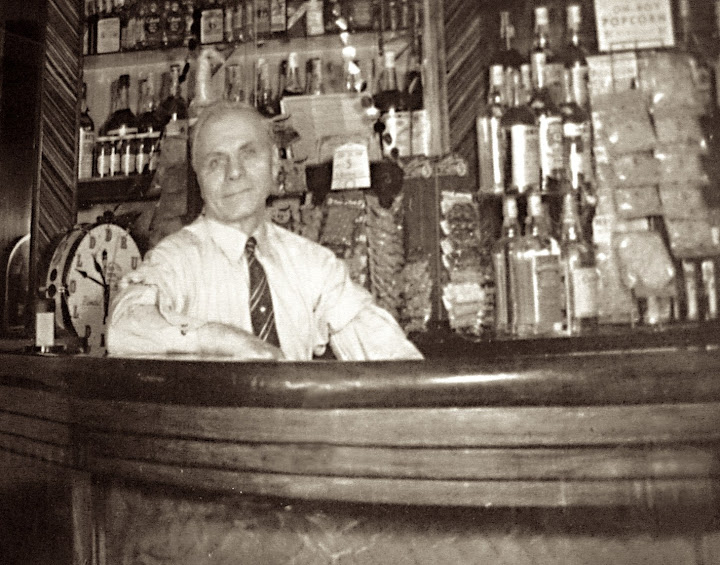John Brown personally invites you to the GRAND OPENING TOMORROW of one of Oshkosh’s finest and most beautiful taverns at 164 MAIN STREET (now 434 N. Main St). Nothing has been left undone to make this a really delightful place for discriminating men and women.
The tavern’s name was John Brown's Bar. But there was no John Brown there. The name was an alias, likely used as a hedge against the lingering nativism of the era. The actual name of the proprietor was John Konstantine Kuchubas, a Greek immigrant whose picture still hangs on the wall at Oblio’s.
 |
| John Konstantine Kuchubas |
Kuchubas was born in Greece in 1884, the same year construction was completed on the building where he installed his tavern. As a teenager, Kuchubas served in the Greek military before fleeing his homeland at the age of 18. It's not clear when he arrived in Oshkosh, but by 1915 he was here working in pool halls. A year later, Kuchubas married Oshkosh native Elsie Zwickey.
Through the dry years, Kuchubas ran a pool hall with his brother-in-law John Zwickey. Named the Pastime Billiard Parlor, the business was located at what is now 436 N. Main, just one door north of where he would go into the tavern business.
When Kuchubas launched John Brown’s Bar it became the first tavern since the late 1880s to occupy the north half of the building originally known as the Dichmann Block. The neighboring (southern) portion of the building had been home to the Schlitz Beer Hall for decades. But that establishment was outlawed with the advent of Prohibition in 1920.
The division of the two, separate spaces remains clearly visible at Oblio's.
 |
| Former Site of The Schlitz Beer Hall Within Oblio's |
 |
| The main bar room at Oblio's where Kuchubas opened John Brown's Bar. |
The pool halls Kuchubas ran didn't hold liquor licenses. And at 52 years old, he had no previous experience running a tavern. But that wasn’t necessarily a liability. With the end of Prohibition in 1932, the rules governing taverns had been re-written. Even old-time saloonists were having to learn the business anew.
Among the primary changes was the role played by brewers. Before Prohibition, brewery ownership of saloons meant that brewers often maintained broad control over a tavern’s operation. That influence had been reduced to a minimum, due to new legislation that followed the repeal of Prohibition. It meant that for the first time, beers other than those brewed by Schlitz would be served in the building Schlitz had owned since 1886.
The ties to Schlitz were no longer binding, but they hadn't been severed. Though he sold other beer in bottles, Schlitz remained the only beer Kuchubas offered on draft. The ad for his grand opening shows the prominent position held by the Milwaukee brewery at John Brown's Bar.
 |
| Oshkosh Daily Northwestern, November 27, 1936 |
Kuchubas ran John Brown’s Bar until 1955 when he retired at age 71. He died 15 years later in 1970. Kuchubas is buried in Riverside Cemetery, some 5,000 miles from the place of his birth.
There are two pictures of Kuchubas in Oblio's. Both show him seated behind the art-deco style bar built for him by the Robert Brand & Sons Company of Oshkosh.
Kuchubas imprint on the tavern waned over the years. With it went much of the bar’s original luster. The connection to Schlitz ended in 1972 when the brewery sold the building. It became Oblio's in 1974.
When Mark Schultz and Todd Cummings took over Oblio's in 1979 it marked a turning point. Cummings and Schultz, who also own the building, have rehabilitated this historic bar. Their renovations included the removal of a drop ceiling to reveal the original, high ceiling of pressed tin. In 2005 they merged the separate rooms once occupied by the Schlitz Beer Hall and John Brown's Bar.
Few public spaces of this vintage reveal the influence of their origin in such an immediate and approachable way. Oblio's is one of those rare places. It's all still there, right down to the Schlitz.










































